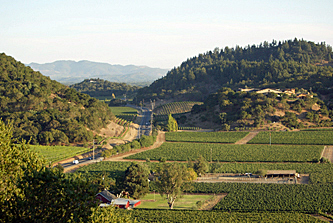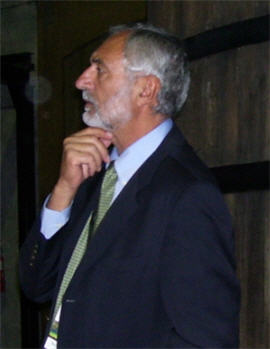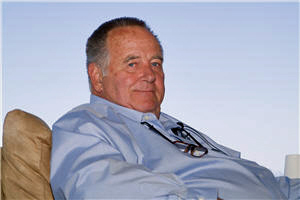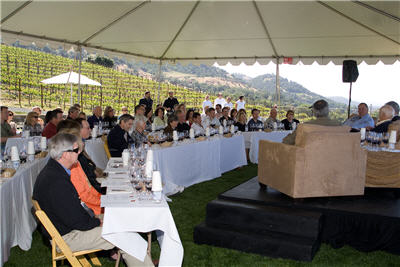

Ground Zero for Cabernet Sauvignon: The Silverado Trail weaves through Napa Valley's Stags Leap District.
Stags Leap District ~ Napa Valley (AVA)
Stags Leap District's
20th Anniversary Reveals its Appellation Distinctiveness
by
Dan Berger
April 29, 2009
 tag’s Leap Wine Cellars’ victory over the French and Napa colleagues in the Tasting of Paris in 1976 vaulted the region to the head of the list, and a decade later, when the same tasting was re-staged, another Stags Leap-area wine, the 1972 Clos Du Val, was the winner.
tag’s Leap Wine Cellars’ victory over the French and Napa colleagues in the Tasting of Paris in 1976 vaulted the region to the head of the list, and a decade later, when the same tasting was re-staged, another Stags Leap-area wine, the 1972 Clos Du Val, was the winner.
The region celebrated its 20th anniversary as an American Viticultural Appellation last Saturday (April 24) with a daylong celebration including a seminar, open houses, and a gala dinner, during which the region’s history was revealed by some of the pioneers.

1. Bernard Portet, Clos Du Val.
“But one day I was driving south down the [Silverado] Trail, from St. Helena, and my car’s air conditioning wasn’t working, so I had the windows open, and when I reached a certain point, I noticed that the temperature in the late afternoon had changed; it was much cooler. And I knew this would be the place to make the wine I wanted to make. I knew it was a place where I could make a wine with more fresh fruit from the cooler weather.”
Portet said he only saw alfalfa and prunes growing in the area, but soon was introduced to the area’s top grower, Dick Steltzner, who actually planted the first 120 acres of the property that became Clos du Val. The late Nathan Fay first planted Cabernet Sauvignon in the area in 1961, but Steltzner was committed to the variety soon after.
“I planted my first vines in 1965,” said Steltzner. “I put in Cabernet and Riesling, and I knew Cabernet was a good grape for the area – because I could get $175 a

2. Dick Steltzner, Steltzner Vineyards.
Steltzner, who planted and named Al Brounstein’s famed Calistoga-area Diamond Creek sub-region vineyards, said the afternoon breezes that came north from the colder Coombsville and Carneros regions as well as San Pablo Bay were what gave Stags Leap a radically different opportunity than existed over on the other, more westerly side of the valley, notably at Oakville and Rutherford.
And so as not to take a position one way or the other, the district association, called Stags Leap District Winegrowers, uses no apostrophe.
Many wine lovers of the last few years seem to go for the bolder, brassier style of wines, and thus the more popular of these wines, both from Stags Leap and other areas, are 1997s, 2002s, 2004s, and as yet unreleased 2007s. They are popular with many in the media as well as well-heeled consumers.
But many of the wine makers at the late April’s celebration seemed more smitten with the structure of the 1995s, 1999s, and the 2001s, from cooler vintages. Proving that point at the dinner, Clos du Val’s 1992 (regular bottling) and Robert Sinskey’s 2003 SLD were served at the dinner. Both came from “lesser” vintages that weren’t as ripe and fleshy as other vintages. And the majority of people I spoke with were stunned by the quality of both wines.
Portet told a number of stories about the great camaraderie that has existed since the beginning in Napa. He said that in one early vintage at Clos du Val, a new press broke down because of the failure of the supplier (a French company,

3. The tasting event at the 20th Anniversary event of the Stags Leap District.
I asked Portet how he viewed many of today’s Napa Cabernets that are picked so ripe that they defy identification of the area and are simply ultra-ripe. “The key is to respect the terroir,” he said. “With many new wine makers that are picking overripe fruit, the typicity of the region is disappearing, and that usually means that the terroir is lost. In some cases you can understand it - marketing plays a negative role [in the development of] terroir character. The biggest danger to the perception of terroir is the desire by some wine makers for [wines of] instant gratification.”
Photos by Juliann Savage (1), Robert M. Bruno (2,3); top photo courtesy Stags Leap District Winegrowers










 READER FEEDBACK: To post your comments on this story,
READER FEEDBACK: To post your comments on this story,


